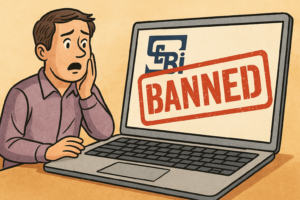The Education of a Speculator by Victor Niederhoffer is a treasure trove of wisdom that goes beyond the technicalities of trading. It delves into the human side of speculation, exploring the psychological elements that often dictate the success or failure of a trader.
In the complex world of stock markets, traders, and financial markets, one name that stands out is Victor Niederhoffer. A famed figure in the realm of finance, Niederhoffer’s insights are an invaluable guide for anyone aspiring to navigate the tumultuous waters of stock trading. In his seminal work, “The Education of a Speculator,” Niederhoffer shares his journey, experiences, and insights, providing a unique perspective into the psychology of trading.
“The Education of a Speculator” is a fascinating exploration of not just the technical aspects of trading but also the psychological and philosophical underpinnings that form the bedrock of successful speculation. Unlike many other books on finance that focus solely on strategies and tactics, Niederhoffer’s work delves into the very psyche of a trader, highlighting the importance of understanding human behavior and its role in shaping market trends.
This blog post aims to unearth and dissect the rich trove of wisdom encapsulated in this extraordinary book. Each lesson, whether it revolves around the importance of historical context, market patterns, or the role of personal biases, is a key piece of the complex puzzle that constitutes successful speculation.
As we delve into the 18 key ideas from “The Education of a Speculator,” bear in mind that each lesson is not just a nugget of wisdom, but also a stepping stone towards achieving a more nuanced understanding of financial markets. So, buckle up as we embark on an exciting journey of learning and discovery that promises to transform the way you approach stock trading.
1. The Market as a Living Entity: Niederhoffer posits that the market is not a static entity, but a living organism that evolves and adapts. Like a living creature, it reacts to stimuli, has moods, and exhibits patterns of behavior. To be a successful trader, one must learn to ‘read’ these behavioral cues and predict their outcomes.
2. The Role of History: Understanding historical trends and patterns is paramount. Niederhoffer emphasizes the importance of studying the past to predict future market movements. History may not repeat itself exactly, but it often rhymes, providing valuable clues to the discerning trader.
3. Pattern Recognition: The markets exhibit certain recurrent patterns. Recognizing these patterns and learning to anticipate their recurrence can give traders a strategic edge. For instance, certain stock prices might consistently rise or fall under specific market conditions.
4. Emotional Control: Trading is as much about managing emotions as it is about managing investments. Fear and greed can cloud judgment and lead to poor decisions. Niederhoffer’s experiences underscore the importance of maintaining emotional equilibrium, even in the face of market volatility.
5. The Importance of Diversification: Niederhoffer champions the concept of diversification. By spreading investments across different assets, traders can mitigate risks and increase the potential for overall returns.
6. Contrarian Thinking: Sometimes, going against the grain can yield rich dividends. While it’s risky, contrarian thinking allows traders to capitalize on opportunities overlooked by others. Niederhoffer’s career is rife with examples of successful contrarian bets.
7. Understanding Market Psychology: Markets are driven by the collective psychology of its participants. Understanding this psychology, including common biases and behavioral patterns, can offer valuable insights into market movements.
8. Risk Management: Niederhoffer underscores the importance of managing risk. This means setting stop-loss limits, not over-leveraging positions, and consistently reassessing one’s investment strategy in light of changing market conditions.
9. The Importance of Discipline: Successful trading requires discipline. This means sticking to a plan, avoiding impulsive decisions, and maintaining a consistent strategy, even when the market seems to be moving against you.
10. The Fallacy of Prediction: Niederhoffer emphasizes the dangers of prediction in trading. The future is inherently uncertain and basing trades on predictions can often lead to disastrous outcomes. Instead, focus on understanding market dynamics and managing risk.
11. The Value of Independent Thinking: Being able to think independently is crucial. The market is often influenced by herd mentality, and being able to step away from the crowd to make independent assessments can lead to more profitable trading decisions.
12. Learning from Mistakes: Every trader makes mistakes. Niederhoffer’s book is replete with examples of his own. What’s important is not the mistakes themselves, but the lessons learned from them.
13. The Power of Resilience: Trading is a field fraught with setbacks. Resilience, the ability to bounce back from losses, is key. Niederhoffer’s career, marked by significant highs and lows, demonstrates the power of resilience in the face of adversity.
14. The Interconnectedness of Markets: Niederhoffer highlights the interconnectedness of global markets. Events in one market often ripple out to affect others. Understanding these relationships can offer a broader perspective and inform trading decisions.
15. The Role of Intuition: While trading is often seen as a numbers game, Niederhoffer stresses the role of intuition. Built over time, through experience and observation, intuition can sometimes guide traders when data and analysis fall short.
16. The Influence of External Factors: Markets do not exist in a vacuum. They are influenced by a myriad of external factors, from political events to technological advancements. Successful traders understand and anticipate these influences.
17. The Importance of a Sound Strategy: A well-thought-out strategy is the cornerstone of successful trading. Niederhoffer stresses the importance of having a robust strategy, grounded in thorough research and analysis, and the discipline to stick to it.
18. The Perils of Overconfidence: Overconfidence can be a trader’s downfall. Niederhoffer’s own experiences serve as a stark reminder of this, underscoring the need for humility and constant learning in the world of trading.
The 18 ideas we’ve dissected from the book underline a multitude of factors that shape the realm of speculation. From understanding the market as a living entity to the importance of emotional control, from the role of history and pattern recognition to the value of independent thinking and learning from mistakes, each lesson is a stepping stone towards better trading practices. These lessons, coupled with practical examples, provide a roadmap for navigating the tumultuous landscape of the financial markets.
As we conclude this exploration of “The Education of a Speculator,” it’s evident that the lessons gleaned from Victor Niederhoffer’s experiences extend far beyond the realm of finance. They offer profound insights into human psychology, decision-making, and resilience in the face of adversity. These lessons are not just relevant for aspiring traders but for anyone seeking to navigate the uncertainties of life.
Niederhoffer’s journey is a testament to the complex interplay of knowledge, strategy, psychology, and emotion in trading. Each of the 18 ideas we discussed underscores a facet of this intricate mosaic. They highlight the importance of not just understanding markets, but also understanding oneself.
In the final analysis, “The Education of a Speculator” is more than just a book about trading; it’s a book about life, about the trials and tribulations we face, and about the resilience of the human spirit in overcoming them. It’s a reminder that every setback is a setup for a comeback, and every failure is but a stepping stone on the path to success.
In the volatile world of stock trading, where fortunes can be made or lost in the blink of an eye, the importance of education and wisdom cannot be overstated. Niederhoffer’s “The Education of a Speculator” serves as a comprehensive guide, shedding light on the intricacies of the financial markets and offering invaluable lessons to traders at all levels.
In conclusion, “The Education of a Speculator” is a treasure trove of wisdom that goes beyond the technicalities of trading. It delves into the human side of speculation, exploring the psychological elements that often dictate the success or failure of a trader. The key takeaways from this book provide a comprehensive understanding of the financial markets, making it an essential read for anyone interested in the world of trading. As we navigate the ever-evolving landscape of the financial markets, the lessons from Victor Niederhoffer’s journey continue to resonate, offering valuable insights and guiding us towards more informed and strategic trading decisions.
Did you know? Traders like to use our coworking space in Bangalore
Learn more about our coworking space on our YouTube channel Work Theater Studios where we talk about a variety of topics including personal finance, entrepreneurship, business and life.
Did you know? We also have a private theatre in Bangalore.




